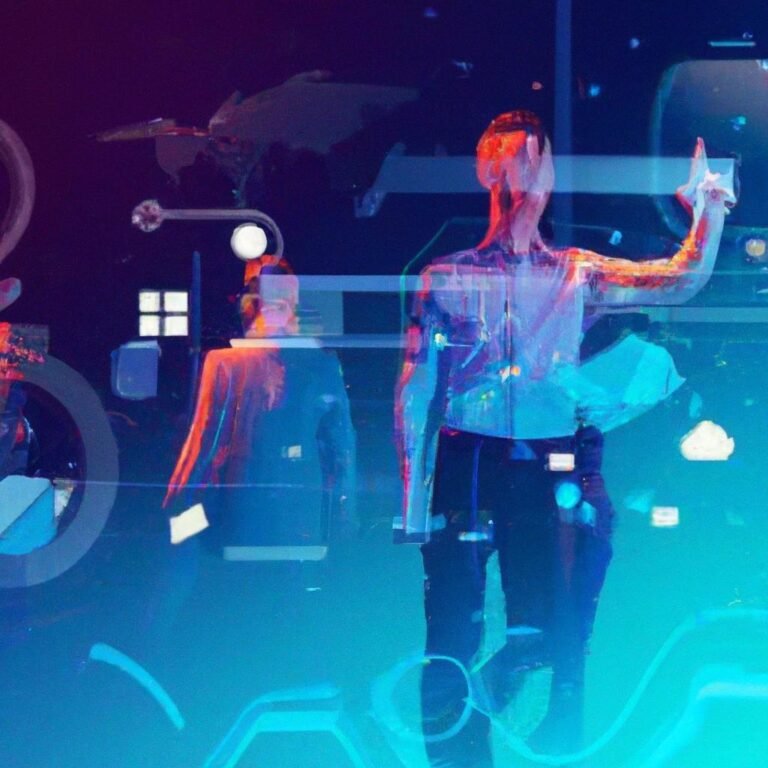In an age where artificial intelligence promises to revolutionize our world—from enhancing productivity to transforming how we connect—it’s easy to forget that these smart systems are still very much imperfect. Every day, we entrust algorithms with decisions that can affect our lives profoundly, yet those same algorithms can stumble in the most unfortunate ways. A miscommunication in an AI-driven healthcare system can delay critical treatment; an error in an autonomous vehicle can endanger lives. As the lines between human intuition and machine logic blur, we are left asking a haunting question: Who’s to blame when things go wrong?
In this emotional landscape, where technology promises convenience but can also lead to chaos, we find ourselves grappling not only with the failures of these intelligent systems but with our own responses to them. Are we too quick to point fingers at the machines, or should we hold ourselves accountable for the blind faith we place in them? Join me as we navigate the complex interplay of AI errors and human responsibility, exploring what it means to be vulnerable in a world increasingly dominated by algorithms. Together, we’ll seek to understand how we can embrace the promise of AI while remaining anchored in our humanity, fostering empathy and accountability in the face of technological imperfections.
Table of Contents
- Understanding the Roots of AI Missteps and Our Responsibility
- The Emotional Toll of Trusting Technology: Who Do We Turn to When AI Fails?
- Building a Bridge Between Innovation and Humanity: Best Practices for Ethical AI Use
- Reclaiming Control: Practical Steps to Ensure Safer Interactions with AI Systems
- Key Takeaways
Understanding the Roots of AI Missteps and Our Responsibility
At the heart of many AI missteps lie the intricate webs of human intent and oversight. The decisions we make—whether in data curation, algorithm creation, or implementation—shape the models that ultimately influence lives. When artificial intelligence falters, it often reflects fundamental biases or misjudgments ingrained in its design and training. These issues don’t arise in a vacuum; they emerge from a complex interplay of economic, social, and ethical factors that demand our attention. In order to mitigate the impacts of these systems, we must acknowledge that the flaws of AI are closely intertwined with the flaws of our own decision-making processes.
Moreover, a collective responsibility exists among all stakeholders in the AI landscape—developers, businesses, and users alike. Understanding that our engagement with technology shapes its development compels us to actively participate in discussions about ethical frameworks and transparency. To drive meaningful change, we can focus on several key areas:
- Accountability: Establishing clear lines of responsibility for AI outcomes.
- Education: Promoting awareness about the potential biases embedded in AI systems.
- Collaboration: Encouraging interdisciplinary approaches that include ethicists, sociologists, and technologists.
The responsibility doesn’t merely lie with technologists; it’s a shared journey towards creating systems that reflect our values while minimizing harm.
The Emotional Toll of Trusting Technology: Who Do We Turn to When AI Fails?
The rise of artificial intelligence has reshaped the landscape of our daily lives, embedding itself into our routines and reshaping our decision-making processes. Yet with this increasing reliance comes an escalating emotional toll. When technology falters—be it through a misdiagnosis by an AI-powered health application or a critical failure in autonomous vehicles—the consequences can be dire. Trusting a system that has the capacity to err evokes feelings of vulnerability and fear, as we grapple with the implications of misplaced faith in algorithms over human intuition. This predicament leaves us questioning who possesses the authority and accountability during moments of technological malfunction. Do we find ourselves staring at an error message, or is it a reflection of our misplaced trust in what we believed to be infallible?
As we navigate this precarious terrain, the emotional burden weighs heavily on our shoulders, prompting introspection. We turn to family, friends, and communities for solace, yet we often find their understandings limited by societal narratives surrounding technology. In these moments of doubt, we may seek comfort in discussing our experiences, sharing stories that echo our frustrations and fears. The question arises: when an error is made, who is left to pick up the pieces? Is it the engineers who designed the faulty AI, the corporate entities behind it, or ourselves for relinquishing control? We are caught in a cycle, beholden to systems that often feel devoid of empathy. It is time to fortify the human connection by fostering conversations that address not just the technology, but the poignant emotions entwined with our digital lives.
Building a Bridge Between Innovation and Humanity: Best Practices for Ethical AI Use
In a world increasingly shaped by algorithms, the relationship between innovation and humanity is more crucial than ever. As artificial intelligence integrates itself into our daily lives, it is essential to maintain a conscientious approach. To foster ethical AI, we must prioritize transparency, accountability, and inclusivity. Emphasizing the human element in technological advancement can be achieved through:
- Fostering Diverse Teams: Bringing together varied perspectives can illuminate potential biases in AI systems.
- Regular Audits: Implementing routine evaluations helps identify and correct errors, ensuring systems align with human values.
- Encouraging Open Dialogue: Creating platforms for stakeholders to discuss ethical implications promotes responsible innovation.
Moreover, it’s essential to establish frameworks that define the relationship between humans and AI. Accountability cannot solely rest on the technology; it is imperative to develop systems that emphasize human responsibility in decision-making. A useful approach can be illustrated via a simple model:
| Aspect | Human Responsibility | AI Role |
|---|---|---|
| Decision Making | Evaluate outcomes of AI suggestions | Provide data-driven insights |
| Data Handling | Ensure ethical data usage | Analyze and sift through information |
| Impact Assessment | Monitor societal effects | Generate predictive analytics |
This collaborative model not only clarifies roles but also strengthens the bridge between technological advancement and ethical considerations, ultimately enabling us to navigate the complexities of AI with compassion and wisdom.
Reclaiming Control: Practical Steps to Ensure Safer Interactions with AI Systems
In navigating the complex landscape of AI interactions, it becomes imperative to establish a sense of agency over the technologies we engage with daily. This can be achieved through a few proactive strategies that foster a secure environment for all involved. Consider adopting the following practices:
- Education and Awareness: Arm yourself with knowledge about how AI systems function. Understanding the limitations and strengths of AI can demystify these technologies and reduce frustration during errors.
- Transparent Communication: Foster open channels of dialog with AI developers. Providing feedback can help create more robust systems that acknowledge human error and improve responsiveness.
- Set Boundaries: Clearly define the scope of AI’s role in your life, delineating tasks that the technology should handle versus those that require human touch.
Creating a collaborative relationship with AI opens doors to more meaningful interactions. Just as you would with any tool, nurturing this relationship relies heavily on understanding both the capabilities and the potential pitfalls. To visualize the impact of AI misjudgments, consider the following:
| Error Type | Potential Impact | Human Response |
|---|---|---|
| Misinterpretation of Data | Inaccurate results leading to poor decisions | Review and verify data outputs |
| Inadequate Training | Enhanced bias and limited perspectives | Advocate for diverse training datasets |
| System Failure | Loss of trust in technology | Implement fallback mechanisms |
Key Takeaways
As we wrap up our exploration of AI errors and the intricate web of responsibility that surrounds them, it’s clear that the conversation transcends mere technological shortcomings. It touches upon the very essence of our humanity—the values we cherish, the mistakes we learn from, and the ethical compass we choose to navigate by. In a world increasingly intertwined with AI, we are reminded that machines, no matter how sophisticated, are ultimately reflections of the designers, users, and society that shapes them.
We must confront the uncomfortable truths: Are we equipping AI with the wisdom and empathy required to understand the nuances of human life? Are we prepared to take accountability for the decisions made in the name of progress? Each error is not just a glitch in the code; it’s a call to action, urging us to refine our approach, engage in difficult conversations, and ensure that our humanity remains at the forefront of technological advancement.
As we march forward into an uncertain future, let us embrace the responsibility that comes with innovation. Together, we can cultivate a landscape where AI thrives not as a replacement for our humanity, but as a tool that amplifies our compassion, creativity, and connection. The journey is not just about understanding AI’s errors; it’s about rediscovering our own humanity in the process. Let’s choose to be accountable, compassionate, and intentional as we navigate this brave new world. After all, at the end of the day, it’s our choices that define the technology we create, and more importantly, the future we envision.





